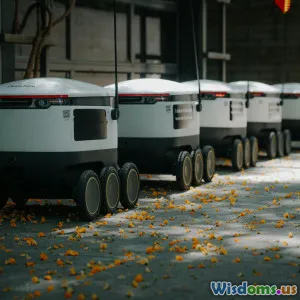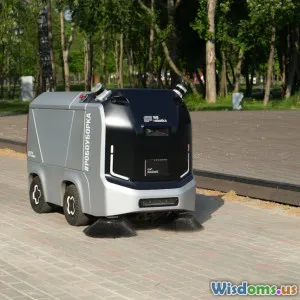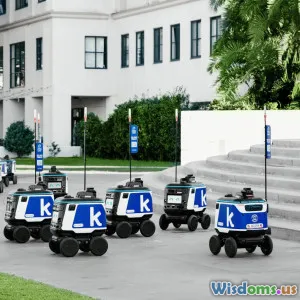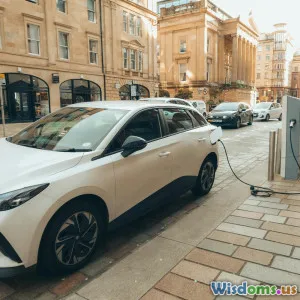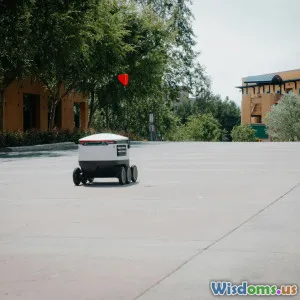
The Next Generation of Urban Mobility
6 min read Explore innovative urban mobility solutions transforming city transport. (0 Reviews)
The Next Generation of Urban Mobility
As cities grow and evolve, so too must the ways in which we navigate them. Urban mobility is at a pivotal point, where technology, sustainability, and user experience converge to redefine how we move within urban spaces. This article delves into the innovative solutions and technologies that are shaping the future of urban transportation, offering insights into how cities can become more accessible and environmentally friendly.
1. The Rise of Micro-Mobility
Micro-mobility refers to small, lightweight vehicles that are primarily used for short-distance travel. This category includes e-scooters, bicycles, and electric bikes. As urban areas become more congested, micro-mobility solutions provide a practical and efficient alternative to traditional vehicles.
- Benefits: Micro-mobility options reduce congestion and lower carbon emissions while promoting a healthier lifestyle. They are often integrated into public transport systems, allowing users to easily transition from one mode of transport to another.
- Examples: Cities like Paris and San Francisco have embraced e-scooter sharing programs, which have become immensely popular for short trips.
2. Autonomous Vehicles and Their Role
Autonomous vehicles (AVs) are poised to revolutionize urban mobility. With advancements in artificial intelligence and machine learning, self-driving cars can navigate complex urban environments with minimal human intervention.
- Benefits: AVs promise to improve road safety by reducing human errors, enhance traffic flow, and increase accessibility for those unable to drive, such as the elderly or disabled.
- Examples: Companies like Waymo and Tesla are leading the charge in AV technology, testing their vehicles in various urban settings to gather data and refine their systems.
3. Integrated Mobility Platforms
The future of urban mobility lies in seamless integration. Mobility-as-a-Service (MaaS) platforms combine various transportation services into a single accessible framework. Users can plan, book, and pay for multiple forms of transport through a single application.
- Benefits: This approach simplifies travel and encourages the use of public transport while reducing reliance on personal vehicles. It enhances user convenience and can lead to reduced carbon footprints.
- Examples: Platforms like Citymapper and Whim in Helsinki serve as one-stop shops for navigating urban transport, offering options from buses to bike-sharing.
4. Sustainable Transportation Initiatives
With climate change being a pressing global issue, cities are increasingly focusing on sustainability in urban mobility. This includes the promotion of electric vehicles (EVs), investment in public transit, and the development of pedestrian-friendly infrastructure.
- Benefits: Sustainable transportation initiatives aim to reduce greenhouse gas emissions, improve air quality, and create healthier urban environments. Governments and organizations are also incentivizing the shift towards greener mobility options.
- Examples: Cities like Amsterdam have long invested in cycling infrastructure, making it one of the most bike-friendly cities globally.
5. The Role of Data and Smart Infrastructure
Data plays a crucial role in shaping the next generation of urban mobility. Smart infrastructure utilizes sensors and data analytics to monitor traffic patterns, optimize public transport routes, and manage parking spaces efficiently.
- Benefits: By leveraging data, cities can make informed decisions that enhance mobility and reduce congestion. Smart traffic lights, for example, can adapt to real-time traffic conditions, improving flow and reducing waiting times.
- Examples: Cities like Singapore are utilizing smart traffic systems to improve transportation efficiency and reduce travel time.
Conclusion
The next generation of urban mobility is an exciting and dynamic field that promises to transform how we navigate cities. By embracing innovative technologies, promoting sustainability, and integrating various transport modes, urban areas can enhance accessibility and improve the quality of life for residents. As we move forward, it is essential for city planners, policymakers, and communities to collaborate and innovate, ensuring that urban mobility solutions are efficient, inclusive, and environmentally sustainable.
This transition will not only benefit urban dwellers today but will also pave the way for smarter, greener cities for future generations.
Rate the Post
User Reviews
Popular Posts












